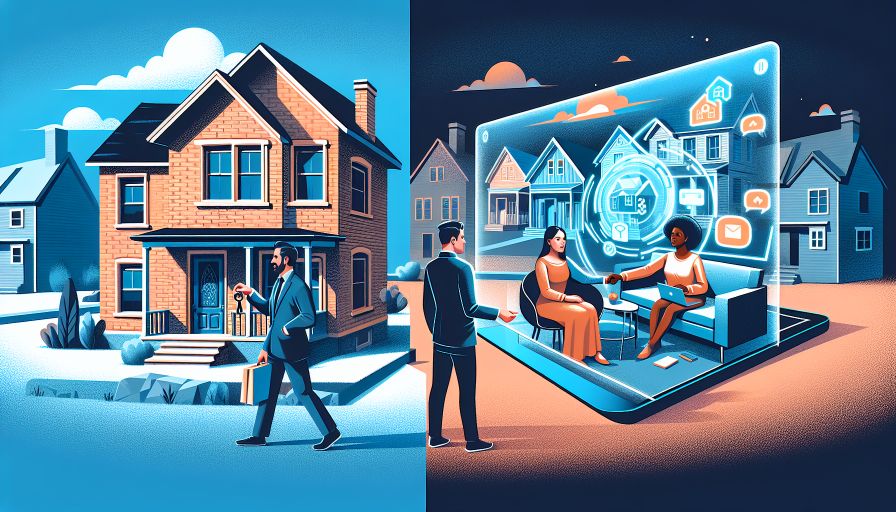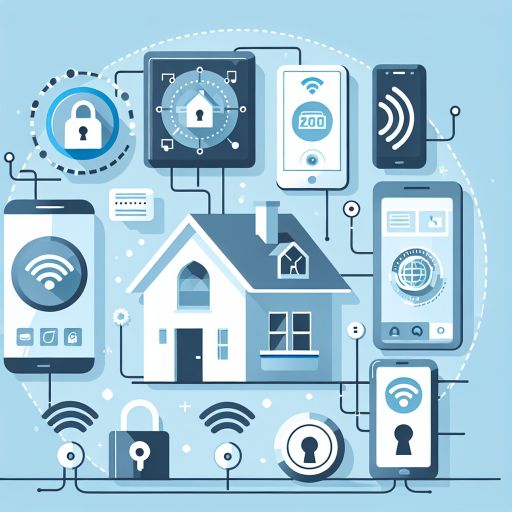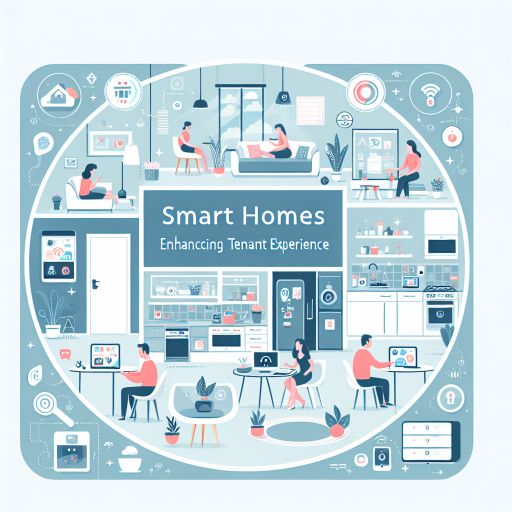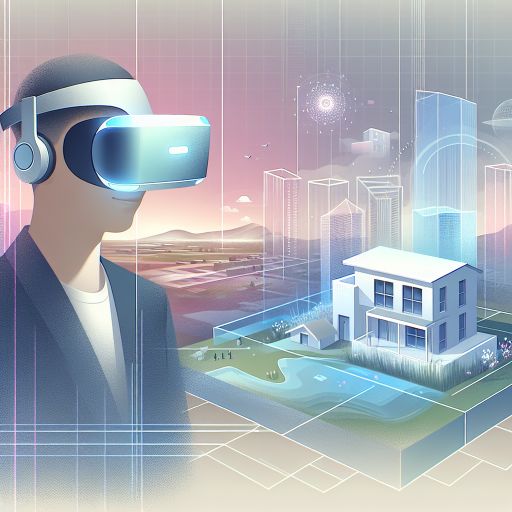The Evolution of Home Rentals: A Historical Context
Home rentals have a long and storied history, evolving significantly over time due to various economic, social, and technological changes. Understanding this historical context allows us to appreciate the transformative impact that recent technological advancements have had on the rental experience.
In the early stages, home rentals were primarily informal arrangements, often based on personal relationships or local community ties. This informal nature made it challenging for tenants to find suitable properties, and for landlords to manage tenancies efficiently.
The industrial revolution and urbanization brought about a significant shift. With increasing migration to urban areas, the demand for rental properties surged, leading to the emergence of more structured and formal rental markets. Real estate agencies became prominent, acting as intermediaries between landlords and tenants.
Post-World War II Developments
The post-World War II era was marked by rapid urban expansion and economic growth. During this period, government policies and housing programs aimed to address housing shortages, further stimulating the rental market. The development of suburban areas also contributed to the growth of rental properties.
Late 20th Century: The Information Age
The late 20th century saw the advent of the information age, significantly altering the landscape of home rentals. The introduction of computers and the internet transformed how rental information was disseminated. Online classifieds began to replace traditional newspaper ads, making it easier for tenants to find available properties.
- 1971: Email communication begins to be used in business, offering a new way for landlords and tenants to communicate.
- 1990s: The rise of the internet and online classified platforms like Craigslist revolutionizes how rental listings are shared.
2000s Onwards: Digital Transformation
In the 2000s, the rental industry continued to embrace digital transformation. Online platforms and marketplaces became dominant, allowing for more efficient property searches, applications, and management processes. The widespread adoption of smartphones further accelerated this trend, enabling tenants to access rental information on the go.
| Year | Key Developments |
|---|---|
| 2004 | Launch of Zillow, offering comprehensive real estate listings online. |
| 2008 | Introduction of Airbnb, reshaping the short-term rental market. |
Today, the home rental market is characterized by sophisticated technology-driven solutions that address various aspects of the rental lifecycle. From initial property search to tenant management and maintenance requests, technology continues to play a crucial role in modernizing the rental experience.
The Role of Technology in Modern Home Rentals
Technological advancements have increasingly infiltrated the home rental market, bringing significant changes to how properties are managed, rented, and experienced by both landlords and tenants. This chapter delves into the various roles that technology plays in modern home rentals, exploring its impact on different facets of the industry.
Streamlining Search and Application Processes
The advent of online platforms has simplified the home search process. Prospective tenants can now access extensive property listings on websites such as Zillow, Apartments.com, and Rent.com. These platforms feature search filters that allow users to narrow down properties based on specific criteria, such as location, price range, and amenities.
Moreover, digital application processes expedite the rental experience. Platforms often include digital forms for submitting applications, uploading necessary documents, and even signing leases electronically. This eliminates the need for physical paperwork and personal visits, streamlining the entire process.
Improving Property Management
Property management has also been revolutionized by technology. Software systems such as AppFolio, Buildium, and Propertyware enable landlords and property managers to handle various tasks efficiently. These systems offer functionalities like online rent collection, maintenance request tracking, and tenant communication portals.
- Online Rent Collection: Tenants can pay their rent online through secure portals, reducing the risk of late payments and lost checks.
- Maintenance Requests: Tenants can submit maintenance requests digitally, allowing property managers to track and resolve issues promptly.
- Communication: Digital communication tools ensure efficient interaction between landlords and tenants, improving overall service quality.
Enhanced Security and Convenience
Advances in smart home technology have led to the integration of security and convenience features in rental properties. These include smart locks, video doorbells, and connected home systems that can be managed remotely via smartphones or computers. Popular brands like Ring, Nest, and August provide solutions that enhance the security and convenience of rental homes.
- Smart Locks: These devices allow tenants to lock and unlock doors using their smartphones, providing ease of access and improved security.
- Video Doorbells: Tenants can monitor visitors and deliveries in real-time, even when they are not at home.
- Connected Home Systems: Systems like Nest Thermostat enable tenants to control heating, cooling, and other home settings remotely, optimizing comfort and energy efficiency.
Data-Driven Decision Making
Data analytics plays a crucial role in modern home rentals by providing insights that inform decision-making for both landlords and tenants. Tools such as Rentometer and Zillow’s Rent Zestimate offer data on rental prices and trends, helping landlords set competitive prices and tenants make informed choices.
Property management software often includes analytic functionalities that track occupancy rates, rental income, and other key performance indicators. These insights enable property managers to optimize operations, reduce vacancies, and improve profitability.
In conclusion, technology significantly enhances various aspects of the home rental experience, from search and application processes to property management and security. As advancements continue, the role of technology in home rentals is likely to expand, offering even more benefits to all stakeholders involved.
Smart Homes: Enhancing Tenant Experience
Smart home technology has become a pivotal component in enhancing the tenant experience within the rental market. This incorporation not only improves convenience but also introduces a layer of efficiency and security that was previously unattainable. Over recent years, the proliferation of smart devices and home automation systems has seen significant adoption rates among rental properties.
Firstly, smart thermostats have revolutionized energy consumption in rental properties. Devices such as the Nest Learning Thermostat and the Ecobee Smart Thermostat learn the schedules and preferences of occupants, optimizing heating and cooling efficiency. According to the U.S. Department of Energy, smart thermostats can save tenants up to 10-12% on heating and 15% on cooling annually.
Another essential feature is smart lighting. Products like Philips Hue and LIFX offer tenants the ability to control lighting through mobile apps or voice commands. This not only provides the convenience of accessing light settings remotely but also contributes to energy savings. The International Energy Agency reports that smart lighting systems can reduce lighting energy consumption by up to 50%.
In terms of security, smart locks and video doorbells play crucial roles. Smart locks from brands like August and Schlage allow tenants to grant access to their homes without physical keys, which can be managed remotely. This feature is especially beneficial for property managers coordinating maintenance or viewings. Video doorbells such as Ring and Nest Hello provide real-time surveillance and recording, significantly enhancing property security. According to a study by Statista, the global market value of smart locks is projected to reach $4.4 billion by 2024, driven by increased demand in rental properties.
Additionally, smart appliances, including refrigerators, washing machines, and ovens, are becoming more prevalent. These devices offer tenants greater control and convenience through connectivity and automation. For example, smart refrigerators can monitor food usage and generate shopping lists, while smart washing machines can schedule wash cycles during off-peak energy times. A report by MarketsandMarkets indicates that the smart home appliance market is expected to grow from $33 billion in 2020 to $75 billion by 2025.
Lastly, voice assistants like Amazon Alexa, Google Assistant, and Apple’s Siri are being integrated to control various smart home features. These assistants can manage everything from entertainment systems to controlling other smart devices, enhancing the overall tenant experience. Voice-activated assistants are forecasted by eMarketer to be used in 75% of U.S. households by 2025.
In conclusion, the integration of smart home technology in rental properties significantly enhances the tenant experience, offering more convenience, security, and efficiency. As adoption rates continue to rise, these systems will likely become standard features in the rental market.
Online Platforms and Marketplaces: Changing How We Find Rentals
The advent of online platforms and marketplaces has significantly transformed the way people find rental properties. These technologies have introduced convenience, transparency, and efficiency to the rental search process, making it easier for both tenants and landlords.
One of the major advancements in this sector is the rise of real estate listing websites like Zillow, Realtor.com, and Redfin. These platforms offer comprehensive databases of rental properties, complete with detailed descriptions, high-quality photos, and often, virtual tours. Tenants can filter their searches by various criteria such as price, location, and amenities, allowing for a more tailored search experience.
Additionally, mobile applications have further streamlined the rental search process. Apps like Apartments.com and Rent.com enable users to browse listings, view photos, and even apply for rentals directly from their smartphones. These apps also offer notifications for new listings that match the user’s criteria, ensuring that potential tenants do not miss out on new opportunities.
Online marketplaces like Airbnb and Vrbo have also influenced the rental market by introducing the concept of short-term rentals. These platforms allow property owners to rent out their homes or apartments for short periods, catering to travelers, business professionals, and people in between permanent residences. This has not only diversified rental options but also introduced a new revenue stream for property owners.
Moreover, these platforms often include review and rating systems. Tenants can read feedback from previous renters, providing an additional layer of transparency and trust. This helps prospective renters make more informed decisions based on the experiences of others.
Another important development is the implementation of secure online payment systems. Platforms often integrate payment gateways that allow tenants to pay their rent securely online, reducing the need for physical transactions and simplifying the rental process. Services like Zelle, PayPal, and Venmo are commonly used within these platforms to facilitate seamless financial transactions.
Lastly, documentation and application processes have been digitized by many online platforms. Services such as DocuSign enable the electronic signing of lease agreements, while platforms like Cozy provide online applications, credit checks, and background screening. This aids in reducing paperwork and speeding up the rental process.
In summary, online platforms and marketplaces have brought convenience and transparency to the home rental experience. They offer detailed property information, secure payment options, and streamlined application processes, thereby enhancing the overall rental journey for both tenants and landlords.
The Impact of Data Analytics on Rental Pricing and Property Management
Data analytics has significantly influenced rental pricing and property management practices, leveraging large amounts of data to provide more accurate and strategic decisions. Traditionally, determining rental prices relied heavily on manual evaluations and market trends that could be time-consuming and sometimes inaccurate. Today, advancements in data analytics offer a more precise and efficient approach.
Automated Rental Pricing
Automated tools powered by data analytics enable landlords and property managers to set competitive rental prices based on various data points. These tools analyze current market trends, historical pricing data, and demand-supply metrics to recommend optimal rental rates. According to a report by Zillow, their rental pricing algorithm incorporates over 100 data points, ensuring that rental prices are both competitive and fair.
Tenant Screening and Predictive Analysis
Effective tenant screening is crucial for property management. Data analytics facilitates a more thorough assessment of potential tenants by analyzing credit scores, rental history, and even social media activity, providing a holistic view of a candidate’s reliability. Predictive analysis can forecast tenant behavior, such as the likelihood of late payments or the chance of long-term tenancy, allowing for more informed decisions.
- Credit scores and financial history
- Rental history and eviction records
- Behavioral patterns and social media insights
Operational Efficiency
Property management operations have become more streamlined through data analytics. Maintenance issues can be predicted before they become significant problems by analyzing patterns and historical data. A study by Property Week indicated that predictive maintenance could reduce overall repair costs by up to 15%. Additionally, occupancy rates and turnover times are closely monitored to maximize revenue and minimize vacancy periods.
Personalized Marketing Strategies
Data analytics also supports targeted marketing strategies, ensuring that rental advertisements reach the right audience. By analyzing demographics, online behavior, and search patterns, property managers can tailor their marketing efforts to attract suitable tenants. Platforms such as Airbnb and Booking.com utilize data-driven insights to provide personalized recommendations to users, enhancing engagement and booking rates.
Overall, data analytics has transformed rental pricing and property management by incorporating precision, efficiency, and strategic insights into these processes. The usage of data-driven decision-making tools continuously evolves, promising further advancements in the sector.
Virtual Tours and Augmented Reality: Revolutionizing Property Viewing
Virtual tours and augmented reality (AR) have dramatically transformed the way prospective tenants view rental properties. Traditionally, physical visits were the primary method for tenants to inspect homes, often requiring significant time and logistical planning. Today, technological advancements have introduced more efficient and immersive alternatives.
Virtual tours utilize 360-degree photography and video to create comprehensive, interactive experiences. These tours allow potential renters to explore properties from the comfort of their own homes, navigating through rooms and spaces as if they were physically present. Companies like Matterport and iStaging have developed advanced platforms that enable high-quality virtual tours, making it easier for tenants to shortlist properties without the need for initial in-person visits.
According to industry data, property listings that include virtual tours receive significantly higher engagement. A report from Realtor.com found that listings with virtual tours receive 87% more views than those without, indicating a strong preference for this technology among renters. This increased engagement can lead to quicker rental agreements and more efficient turnover for property managers.
Augmented Reality (AR) takes the concept of virtual tours a step further by overlaying digital information onto the physical world. Through the use of AR, potential renters can visualize furniture and decor within a property, helping them gauge the space’s suitability for their needs. IKEA’s Place app, for example, allows users to place virtual furniture in real environments through their smartphones, aiding renters in making informed decisions about how their belongings will fit in new spaces.
Moreover, advancements in AR technology are making these applications increasingly accessible. Devices like smartphones and tablets, which are commonly available, now possess the capability to support sophisticated AR experiences. This broad accessibility ensures that a wide range of users can benefit from AR-enhanced property viewings.
The adoption of virtual tours and AR in home rentals is also beneficial for international tenants. Individuals relocating from different countries or cities can thoroughly inspect properties without the need for travel, significantly reducing the strain associated with long-distance moves. This global reach extends market opportunities for property managers and broadens the tenant pool.
Overall, the integration of virtual tours and augmented reality in the home rental experience signifies a notable shift towards convenience and efficiency. These technologies not only improve the viewing process for tenants but also streamline operations for property managers, reflecting a broader trend of digital transformation within the real estate sector.
Future Trends: What to Expect in Home Rental Technology
The landscape of home rental technology is continuously evolving, leading to several future trends poised to further transform the industry. As we look ahead, these advancements promise to make the rental process more efficient, transparent, and user-friendly for both tenants and landlords.
Artificial Intelligence and Machine Learning
Artificial Intelligence (AI) and Machine Learning (ML) are expected to play a significant role in the future of home rentals. According to a report by PwC, AI can streamline property management by automating tasks such as maintenance requests, rent collection, and tenant screening. This automation not only saves time but also reduces errors and improves the overall efficiency of property management.
Blockchain Technology
Blockchain technology is another trend that is set to impact the home rental market. A report from Deloitte suggests that blockchain can enhance security and transparency in rental transactions. By using decentralized ledgers, rental agreements and payments can be securely recorded and verified, reducing the risk of fraud and ensuring that both parties adhere to the agreed-upon terms.
Internet of Things (IoT) Expansion
The Internet of Things (IoT) is anticipated to expand further into home rentals. IoT devices, such as smart thermostats, security cameras, and lighting systems, can provide tenants with greater control over their living environment. A study by McKinsey & Company highlights that IoT integration can also benefit landlords by offering data insights on energy use and alerting them to potential maintenance issues before they become significant problems.
Sustainable and Eco-Friendly Technologies
As environmental concerns grow, sustainable and eco-friendly technologies are expected to become more prominent in the rental market. Green building technologies and energy-efficient appliances are increasingly being adopted to attract eco-conscious tenants. The U.S. Green Building Council reports that buildings with sustainable features can command higher rental prices and have lower vacancy rates.
Enhanced Personalization through Big Data
Big data analytics is set to enhance the personalization of the rental experience. By analyzing large datasets, companies can offer customized rental recommendations based on a tenant’s preferences, budget, and search history. According to an article in Forbes, this level of personalization can improve tenant satisfaction and increase the likelihood of long-term leases.
- Artificial Intelligence for Property Management
- Blockchain for Secure Transactions
- Expansion of IoT in Rentals
- Sustainable Technologies
- Personalization through Big Data
In summary, the future of home rental technology looks promising, with advancements aimed at improving efficiency, security, and personalization. As these trends continue to develop, they will likely bring about significant changes in how the rental market operates, benefiting both tenants and landlords alike.









